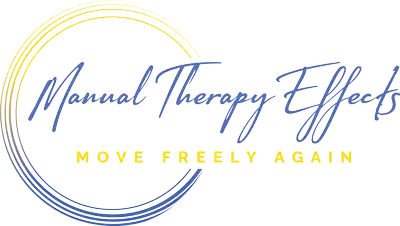As a physical therapist, I deal with pain on a daily basis in one form or another. Back pain, shoulder pain, knee pain, neck pain, ankle pain… they’re all part of my daily experience. Pain is such a common experience for most individuals at some point in their lives, and yet the truth is that so many people don’t know the first thing about what pain actually is. Pain is mysterious, and for many of us, pain is actually completely and utterly confusing. I’d like to shed some light on the darkness, tackling the definition of pain one step at a time.
For most of us, pain is a very common part of our lives. We stub our toe, scrape a knee, or get our finger caught in a door. While it’s certainly uncomfortable, these types of pain aren’t necessarily pointing to a problem. In contrast, prolonged headaches, severe and chronic eye pain, and even toothache, might point to more serious problems. What makes pain such a mystery is that it tends to surface in odd ways, at odd times, and sometimes in completely odd places. And yet, there is an explanation for this: our bodies are telling us that something is wrong, but not necessarily what is wrong.
Let me explain. When we experience pain, our bodies are sending signals to our brain from the area that’s being affected. If you cut your finger, for example, your brain gets told about it and your finger is instantaneously sore. Similarly, if you scrape your knee, or stub your toe, it’s fairly easy to gather information about what happened. But what about when you have chronic back pain, for example? Is it in the spine, the muscle, or the disk? How about if your knee is so sensitive you can no longer walk comfortably? Is it the muscle, or have you done something to the joint itself?
In fact, the body can be extremely odd about sending pain signals. Take a soldier, for example. If he is shot during a skirmish, he may not feel the pain of the entry wound until hours after the battle is over. Why? Because his body decided to delay the pain receptors to the brain so as to keep the soldier alert and responsive when it mattered most. And in many ways our own bodies do the same. How often have you had knee pain that surfaced long after a run during which you twisted your leg? Or, how long after you tripped over the stair did your back start to hurt? Pain can often be delayed, and frustratingly, this postponement often means we forget, or even mask, the cause of the pain.
It is precisely this ambiguous nature of pain that is such a big problem for most of my patients. On a daily basis I hear, “I just don’t know what I did”, or, “I really can’t remember hurting it”. Pain is so frustrating in this way – if you only knew why it’s sore! The truth is, it’s difficult to figure out what your body needs from you – did you pull a muscle, damage the cartilage, or just sit in an odd position? We often can’t know for sure, at least initially.
Unfortunately, then, pain is often not as straightforward as we’d like it to be. One thing remains certain, however: pain indicates a problem. When you cut your finger, the tissue is damaged and your body signals the brain so that something can be done to repair it. In the same way, if your back or knee hurts, something isn’t quite right and the body is trying to tell the brain to repair the damage. In the latter example, it’s just that the answer isn’t as clear. Despite this, though, both scenarios require the painful area to be examined and rehabilitated.
It’s clear to see that pain is a lot like your internal warning system. If it hurts, the chances are that something is wrong. In my clinic, my team and I treat pain as the symptom of an underlying problem. By approaching pain in this way, we make sure to find the root cause of the problem so as to clear up the tenderness and discomfort. Sadly, for many medical professionals, dealing with pain is something that is done back to front. Painkillers and injections are prescribed to mask the pain in the hope that the discomfort will ease in time. In my experience, this just doesn’t work. The way we need to approach pain is NOT as a cause of discomfort, but as a SYMPTOM of a particular problem, whether it’s big or small.
The mystery surrounding ‘pain’ is often exacerbated by the medical industry’s inability to treat the root cause of the problem. Instead, many medical professionals seek to get rid of the pain WITHOUT healing the source of the discomfort. It’s completely counterintuitive. That’s why physical therapy is by far the best way of dealing with gnawing, frustrating, mysterious pain: we find the root cause of the problem, heal it, and ensure that you maintain a pain free, active lifestyle.
We all have to deal with pain in one form or another, but remember, one universal truth remains the same: treat the cause to get rid of the pain. Your body knows exactly what’s best for you, and the greatest thing you can do for it is to give it the benefit of the doubt. A pain free life is possible! Schedule a phone consult with the physical therapist to find out if physical therapy is right for you.
